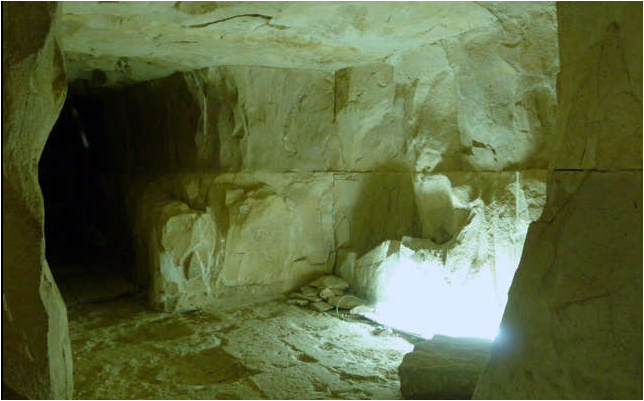Incredible photographs reveal what lies beneath Egypt's pyramids
What's hidden inside Egypt's pyramids?
We all know what the outside of Egypt's pyramids look like, but what about the inside? The majority of the interior layout consisted of narrow passageways, spacious chambers, and steep galleries. Relics from the pyramids can be found in museums all over the world, but it's worth waiting for the Grand Egyptian Museum, which is set to open in November 2022. Over 100,000 artefacts, including Tutankhamun's entire treasure collection, will be displayed in Giza. We go behind the scenes to discover what lies within these ancient world wonders.
Giza's Khufu Pyramid
The Great Pyramids of Giza are made up of three pyramids, each named after a different king: Khufu, Khafre, and Menkaure. The Khufu Pyramid is the tallest of the three, standing at 482 feet (147m). It was built between 2550 and 2490 BC out of 2.3 million stone blocks. King Khufu was the Second Pharaoh of the Fourth Dynasty, reigning from 2589 to 2566 BC.
A dismantled wooden ship was discovered buried next to the pyramid in 1954 – a common inclusion because ancient Egyptians believed these vessels would transport the king to the afterlife. It was housed in its own Solar Boat Museum until 2021, not far from where it was discovered, but it has now been relocated to the new Grand Egyptian Museum, which is set to open to the public in November 2022.
The subterranean passages, also known as the 'pit,' were another aspect of the Khufu Pyramid that was understandably overlooked during early explorations. The rubble blocking the descending passageway was cleared in the 18th century, and access was restored; a Greek or Roman character was discovered on the ceiling. While it may not appear to be the most spectacular discovery, it appears to confirm Greek historian Herodotus' accounts that the pyramid was accessible during the ancient Roman period.
For such a massive pyramid, very few artefacts were discovered. In fact, there are only three items. The items are known as the 'Dixon Relics,' after Waynman Dixon, who discovered them in 1872. They consist of a granite sphere, a forked copper instrument, and a wooden slat. The forked instrument, which could have had a bone or wooden handle, was most likely used to manipulate rope, while the granite sphere functioned as a pounder.
The wooden cedar fragment actually went missing for over 100 years before being rediscovered by chance in 2020 by a curatorial assistant at the University of Aberdeen, who found it in a cigar tin. This item was carbon dated to 500 years before the pyramid's construction, raising new questions about when the pyramid was actually built.
Meidum Pyramid, Meidum Pyramid
Visitors enter Meidum Pyramid through a steep passageway 56 feet (17m) long, leading down to what would have been the burial chamber. The mummified pharaoh would have been housed in this sarcophagus (a large, stone-built 'coffin' usually displayed on ground level). Except there isn't anything there. The burial chamber was never finished, burial remains are missing, and there is no valley temple, which was a standard and important inclusion in royal ancient Egyptian burials.
The painting of the Meidum Geese was discovered in the burial chamber and is now on display at the Egyptian Museum in Cairo (also known as the Egyptian Museum of Antiquities). Six geese are depicted in the wall painting: two pairs facing away from each other in the centre, and one goose at each end picking at the grass. Natural paints such as white limestone, red hematite, and green malachite would have been mixed with egg white.
Dahshur is an ancient plateau about 20 miles (32 kilometres) south of Cairo. The Bent Pyramid is the second pyramid built by King Sneferu, who this time did not build a 'false pyramid' like his one at Meidum, but rather its bent-looking shape. The pyramid's odd shape was caused by a number of construction issues, with the lower part of the pyramid rising at an angle of 54 degrees to 154 feet (47m) before abruptly changing to a 43 degree angle. The Bent Pyramid reopened to the public in 2019 after being closed for structural repairs for 50 years.












Comments
Post a Comment